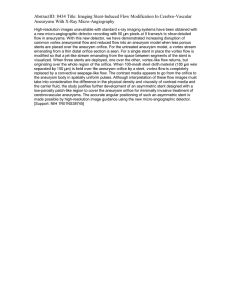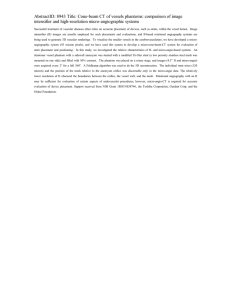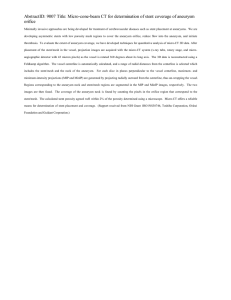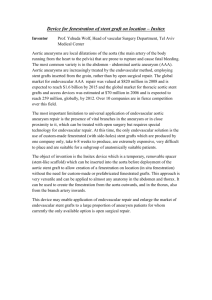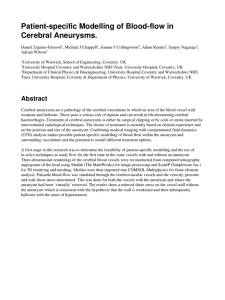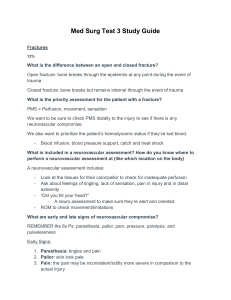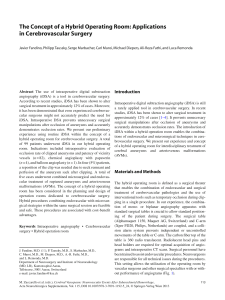Phantoms for Image Guided Neurovascular Interventions
advertisement
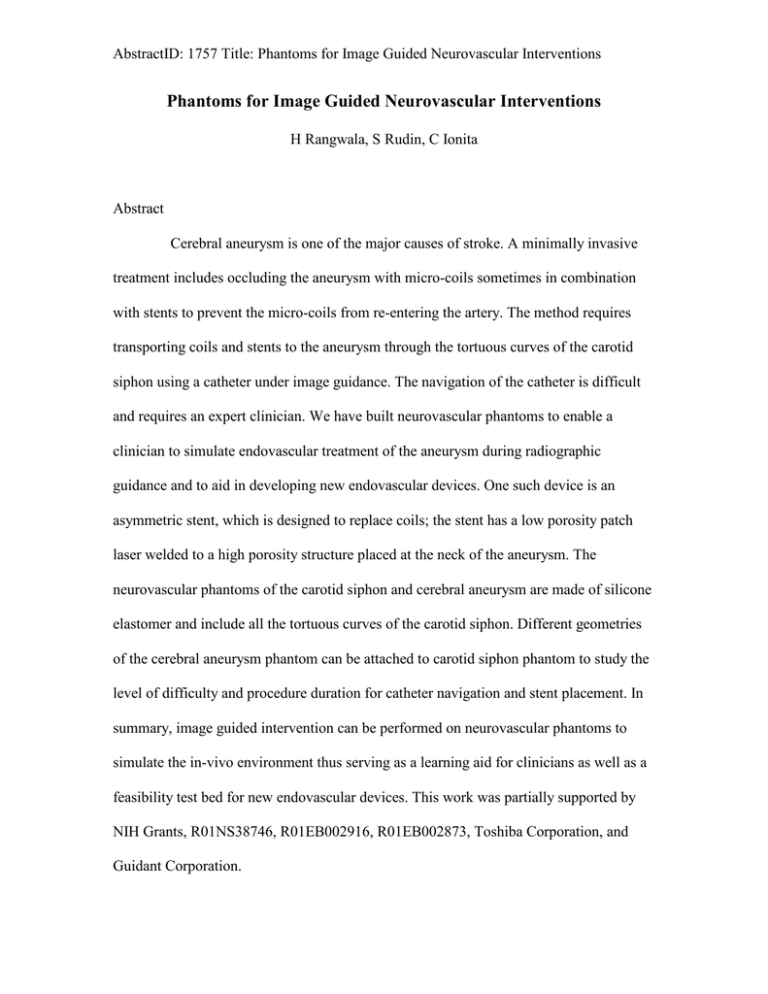
AbstractID: 1757 Title: Phantoms for Image Guided Neurovascular Interventions Phantoms for Image Guided Neurovascular Interventions H Rangwala, S Rudin, C Ionita Abstract Cerebral aneurysm is one of the major causes of stroke. A minimally invasive treatment includes occluding the aneurysm with micro-coils sometimes in combination with stents to prevent the micro-coils from re-entering the artery. The method requires transporting coils and stents to the aneurysm through the tortuous curves of the carotid siphon using a catheter under image guidance. The navigation of the catheter is difficult and requires an expert clinician. We have built neurovascular phantoms to enable a clinician to simulate endovascular treatment of the aneurysm during radiographic guidance and to aid in developing new endovascular devices. One such device is an asymmetric stent, which is designed to replace coils; the stent has a low porosity patch laser welded to a high porosity structure placed at the neck of the aneurysm. The neurovascular phantoms of the carotid siphon and cerebral aneurysm are made of silicone elastomer and include all the tortuous curves of the carotid siphon. Different geometries of the cerebral aneurysm phantom can be attached to carotid siphon phantom to study the level of difficulty and procedure duration for catheter navigation and stent placement. In summary, image guided intervention can be performed on neurovascular phantoms to simulate the in-vivo environment thus serving as a learning aid for clinicians as well as a feasibility test bed for new endovascular devices. This work was partially supported by NIH Grants, R01NS38746, R01EB002916, R01EB002873, Toshiba Corporation, and Guidant Corporation.

